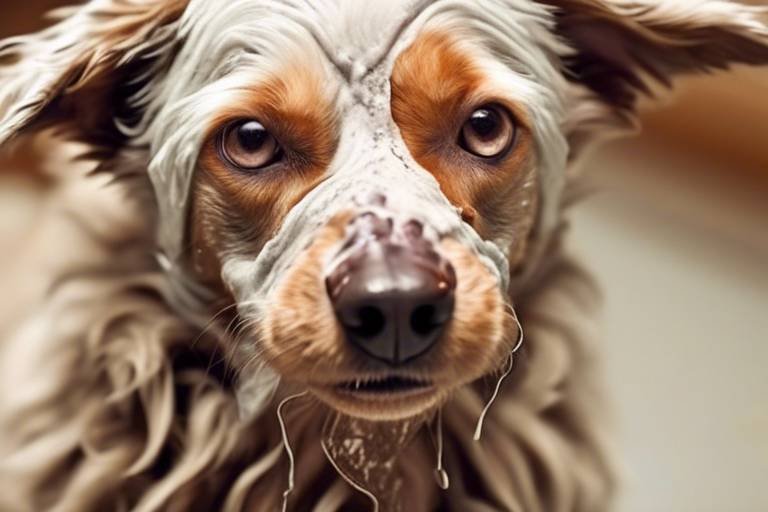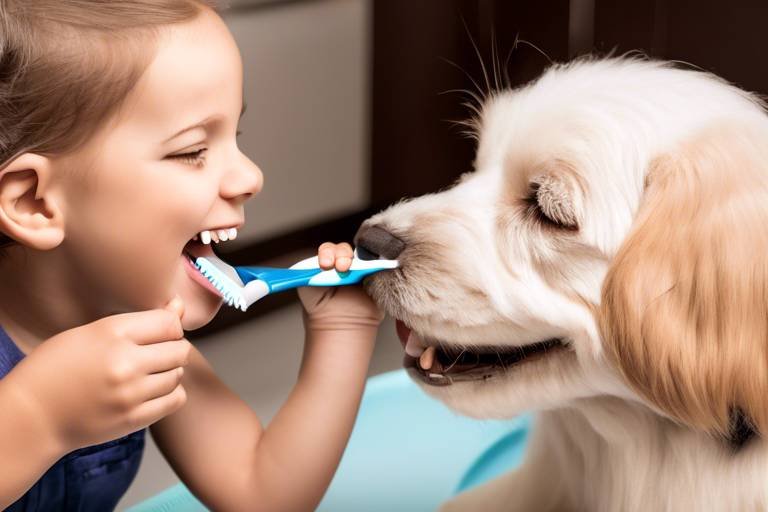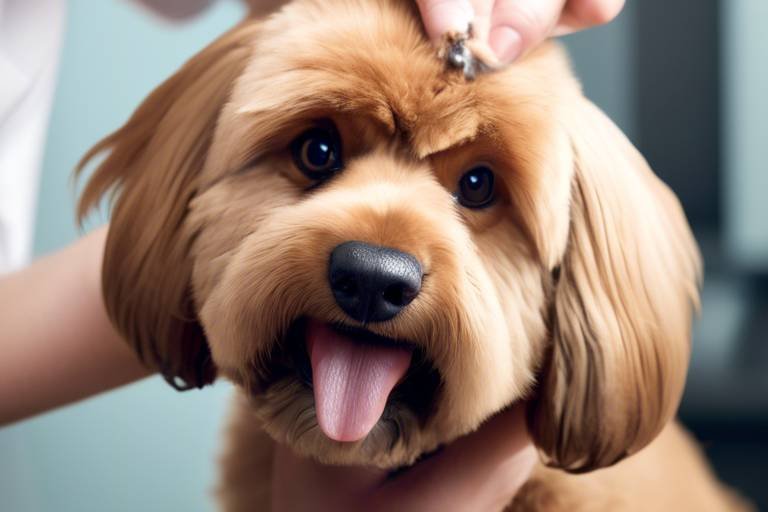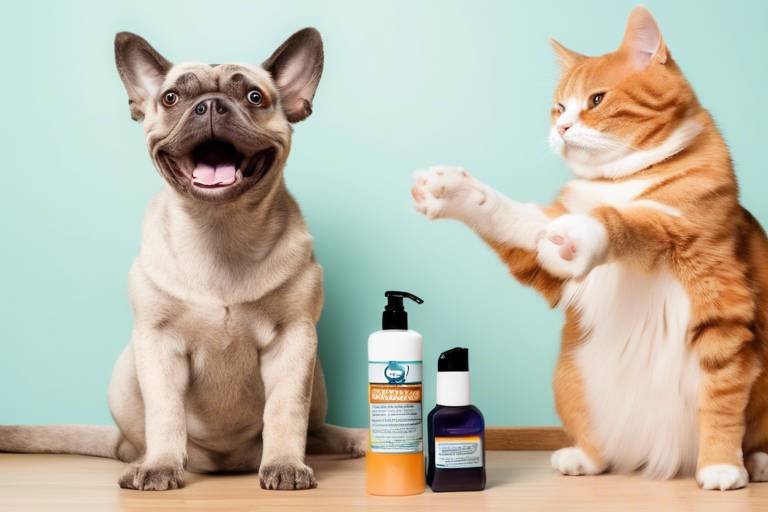The Importance of Grooming for Dogs with Skin Conditions
When it comes to our furry friends, grooming is not just about keeping them looking pretty; it's a vital part of their overall health, especially for dogs suffering from skin conditions. If you’ve ever seen your pup scratching incessantly or noticed patches of irritated skin, you know how distressing it can be—not just for them, but for you as well. Grooming serves as a critical component in managing these conditions, and understanding its significance can make a world of difference in your dog's comfort and well-being.
Imagine your dog’s skin as a protective barrier, much like a shield. When that shield is compromised due to conditions like allergies, dermatitis, or infections, it becomes essential to maintain its integrity through regular grooming. Not only does grooming help to remove dirt and debris, but it also plays a significant role in preventing further complications that can arise from neglected skin issues. Think of it as a regular maintenance check for your car; if you ignore the warning signs, you could end up with a much bigger problem down the road.
Effective grooming can help alleviate discomfort by removing irritants that cause itching and inflammation. It also promotes better air circulation to the skin, allowing it to breathe and heal more effectively. Furthermore, grooming sessions provide an excellent opportunity for you to closely examine your dog's skin for any changes, such as new lumps, bumps, or unusual redness, which can serve as early warning signs of more serious issues.
In essence, grooming is a multifaceted approach to managing your dog's skin health. It’s not just a chore; it's an opportunity to bond with your pet while ensuring they feel their best. By incorporating regular grooming into your dog’s routine, you can significantly improve their quality of life, making them happier and healthier companions.
- How often should I groom my dog with skin conditions? It depends on the specific condition, but generally, regular grooming every few days is recommended.
- What types of brushes are best for dogs with sensitive skin? Soft-bristle brushes or rubber grooming mitts are often suitable for sensitive skin.
- Can I use human shampoo on my dog? No, human shampoos can be harsh on a dog’s skin. Always opt for pet-specific products.
- When should I consult a veterinarian about my dog's skin condition? If you notice excessive scratching, hair loss, or changes in skin color, it's best to seek professional advice.

Understanding Skin Conditions in Dogs
When it comes to our furry friends, their skin health is just as important as their overall well-being. Dogs can suffer from a variety of skin conditions that not only cause discomfort but can also lead to more severe health issues if left untreated. Some of the most common skin conditions include allergies, dermatitis, infections, and parasites. Each of these conditions presents unique symptoms that can affect your dog's quality of life.
For instance, allergies can manifest in various ways, such as itching, redness, and inflammation. Dogs may develop allergies to food, environmental factors like pollen, or even flea bites. On the other hand, dermatitis is often characterized by inflammation of the skin, which can result from irritants or allergens. This condition can lead to excessive scratching, which in turn can cause wounds and infections.
Infections, whether bacterial or fungal, can also plague our canine companions. These infections often arise from scratches or bites that become inflamed and infected, leading to symptoms such as swelling, pus, and a foul odor. Lastly, parasites like fleas and ticks can create a host of skin issues, including hair loss and severe itching. It’s essential to recognize these conditions early, as they can significantly impact your dog's overall health and happiness.
Understanding these issues is crucial for proper care. A dog's skin is their largest organ, acting as a barrier against the environment. When this barrier is compromised due to a skin condition, it can lead to a cascade of problems, affecting not just the skin but also the dog's immune system. Therefore, regular grooming becomes an essential part of managing these conditions. It helps to remove allergens, dead skin, and other irritants that can exacerbate the problem.
To summarize, here are some key points to keep in mind regarding skin conditions in dogs:
- Common Conditions: Allergies, dermatitis, infections, and parasites.
- Symptoms: Itching, redness, inflammation, swelling, and hair loss.
- Impact on Health: Compromised skin can lead to infections and affect the immune system.
Recognizing the signs of skin conditions in your dog is the first step towards effective treatment and management. Regular grooming not only keeps your dog looking their best but also plays a vital role in maintaining their skin health. So, keep an eye out for any unusual behavior or changes in your dog's skin, and don't hesitate to consult your veterinarian if you have concerns.
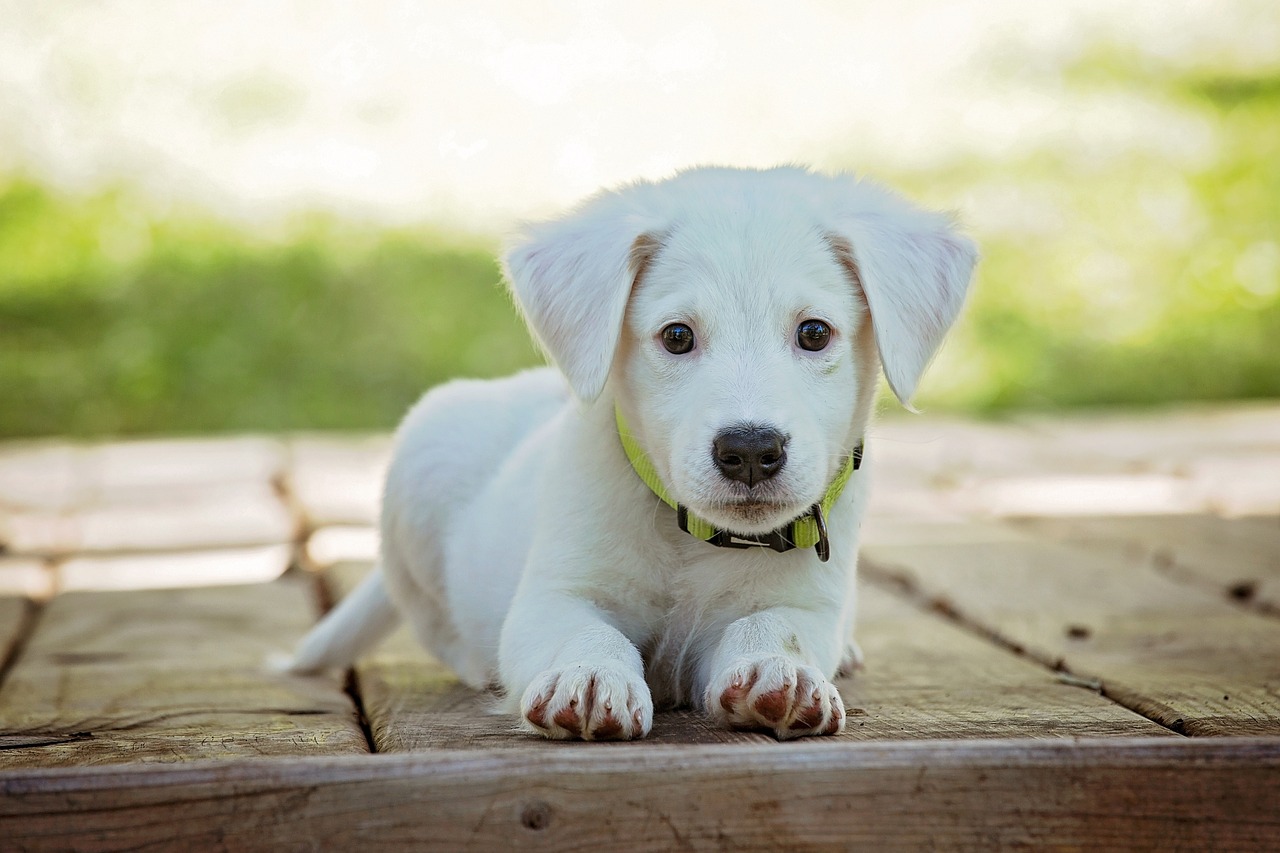
The Role of Grooming in Skin Health
When it comes to our furry friends, grooming is not just about looking good; it's a vital part of maintaining their overall health, especially for dogs suffering from skin conditions. Imagine your dog’s skin as a delicate canvas that requires regular care and attention to keep it healthy and vibrant. Regular grooming serves multiple purposes that go beyond mere aesthetics. It helps in removing irritants, such as dirt, debris, and dead skin cells, which can exacerbate existing skin issues. Think of grooming as a spa day for your dog, where they not only get pampered but also receive necessary treatments that contribute to their well-being.
One of the primary benefits of grooming is its ability to promote healthy skin. By regularly brushing your dog, you stimulate the skin and distribute natural oils throughout their coat. This process not only keeps their fur shiny and healthy but also provides a protective barrier against environmental factors that can lead to skin irritation. Moreover, grooming helps in identifying any unusual changes in your dog’s skin, such as rashes, lumps, or discoloration, which can be early signs of more serious health issues.
Another significant aspect of grooming is its role in preventing further complications. For dogs with existing skin conditions, neglecting grooming can lead to a buildup of irritants that worsen their condition. For instance, matted fur can trap moisture and heat against the skin, creating a perfect breeding ground for bacteria and fungi. Regular grooming not only helps keep the coat manageable but also reduces the risk of infections that can arise from poor skin health. In essence, grooming acts as a first line of defense against potential skin problems.
In addition to brushing, bathing is another crucial component of grooming that can significantly benefit dogs with skin issues. However, it’s essential to do it correctly. Using the right products and following a proper bathing routine can soothe irritated skin and help maintain its moisture balance. For instance, some products contain anti-inflammatory properties that can alleviate itching and discomfort. Therefore, understanding how grooming techniques contribute to skin health is paramount for any dog owner.
To wrap it up, the role of grooming in skin health cannot be overstated. It is a multifaceted approach that encompasses not only aesthetic care but also crucial health benefits. By establishing a regular grooming routine, you are not just keeping your dog looking fabulous; you are actively participating in their journey towards better skin health. So, the next time you pick up that brush or shampoo, remember that you are doing more than just grooming; you are investing in your dog's well-being.
Types of Grooming Techniques
When it comes to grooming dogs with skin conditions, understanding the right techniques can make all the difference. Just like how we need to care for our skin, our furry friends require special attention to keep their coats and skin healthy. Grooming isn't just about aesthetics; it's a vital part of managing skin issues. There are several grooming techniques that can be particularly beneficial for these dogs, including brushing, bathing, and trimming. Each method serves a unique purpose and should be tailored to the specific needs of the dog.
First up is brushing. This technique is crucial for removing dead hair, dirt, and irritants that can exacerbate skin conditions. Regular brushing helps to stimulate the skin and distribute natural oils, promoting a healthier coat. For dogs with sensitive skin, it’s essential to choose the right brush. A soft-bristled brush or a grooming glove can work wonders, as they are gentle and less likely to cause irritation. The frequency of brushing will depend on the dog's coat type and skin condition, but generally, a few times a week is a good rule of thumb.
Next, we have bathing. While bathing can soothe irritated skin and remove allergens, it’s important to do it correctly to avoid further irritation. Using a hypoallergenic shampoo specifically designed for dogs with skin issues is key. The bathing process should be gentle, and it’s advisable to avoid over-bathing, which can strip the skin of its natural oils. A good practice is to bathe the dog once every two to four weeks, depending on their specific needs and recommendations from a veterinarian.
Finally, trimming is another grooming technique that can be beneficial, especially for dogs with longer coats. Trimming helps reduce mats and tangles that can trap moisture and irritants against the skin. However, it’s essential to be cautious and use the right tools to avoid cutting the skin. If the dog is particularly sensitive, it may be wise to consult a professional groomer who understands how to handle dogs with skin conditions.
In summary, the types of grooming techniques you choose should be based on your dog’s specific skin condition and coat type. Regular grooming not only keeps your dog looking good but also plays a crucial role in maintaining their overall skin health. By incorporating brushing, bathing, and trimming into your dog's grooming routine, you can help them feel more comfortable and prevent further skin issues.
- How often should I groom my dog with a skin condition? It depends on the specific skin condition and coat type, but generally, brushing a few times a week and bathing every two to four weeks is recommended.
- What type of brush is best for my dog? A soft-bristled brush or grooming glove is ideal for dogs with sensitive skin.
- Can I use human shampoo on my dog? No, it's best to use a hypoallergenic shampoo specifically formulated for dogs to avoid irritation.
- When should I consider professional grooming? If your dog’s skin condition worsens or if you’re unsure how to handle their grooming needs, consulting a professional groomer is a good idea.
Brushing for Skin Condition Management
When it comes to managing skin conditions in dogs, brushing is more than just a grooming chore; it's a vital part of their overall health regimen. For dogs suffering from skin issues, regular brushing can be a game changer. It helps to remove dead hair and skin cells, which can accumulate and cause irritation, leading to further complications. Think of brushing as a gentle massage that not only keeps your dog's coat looking great but also promotes blood circulation, which is essential for healthy skin.
Choosing the right brush is crucial. Not all brushes are created equal, and the wrong one can do more harm than good, especially for dogs with sensitive skin. For instance, a soft-bristled brush might be perfect for a dog with dry skin, while a slicker brush could be ideal for those with thicker coats. Always consider your dog's specific skin condition and coat type when selecting a brush. Frequency is another important factor; dogs with skin issues may benefit from more frequent brushing, perhaps even daily, to keep their skin clean and irritation-free.
It's also worth noting that brushing can be a bonding experience between you and your furry friend. The act of grooming can help to calm anxious dogs and create a sense of routine and security. As you brush, take the time to inspect your dog's skin for any new irritations or changes. This can help you catch potential issues early before they escalate into more serious problems. Remember, the goal is not just to keep your dog's coat shiny, but to ensure their skin remains healthy and comfortable.
In summary, brushing is an essential practice for dogs with skin conditions. It aids in removing irritants, promotes skin health, and strengthens the bond between you and your pet. So, grab that brush and make it a part of your dog's care routine—your furry friend will thank you for it!
- How often should I brush my dog with skin conditions? It depends on the severity of the condition, but daily brushing is often recommended for dogs with sensitive skin.
- What type of brush is best for dogs with skin issues? Soft-bristled brushes are generally better for sensitive skin, while slicker brushes can be used for thicker coats.
- Can brushing irritate my dog's skin? If done improperly or with the wrong tools, brushing can irritate the skin. Always choose the right brush and be gentle.
- Should I consult a vet before starting a brushing routine? Yes, especially if your dog has a severe skin condition. A vet can provide tailored advice for your dog's specific needs.
Bathing Guidelines for Affected Dogs
Bathing your dog with a skin condition can be a delicate balancing act, akin to walking a tightrope. On one hand, you want to provide relief to their irritated skin, while on the other, you need to ensure that you're not exacerbating the problem. The key is to approach bathing with the right techniques and products. First and foremost, it's essential to choose a gentle, hypoallergenic shampoo specifically formulated for dogs with sensitive skin. This will help minimize irritation and keep their skin hydrated.
Before you even turn on the water, prepare your bathing area. Make sure it’s a calm environment, free from distractions, to help your dog feel more comfortable. Use lukewarm water, as hot water can strip the skin of its natural oils, leading to further dryness and discomfort. When you begin the bathing process, wet your dog thoroughly but gently, ensuring you avoid their eyes, ears, and mouth. A handheld showerhead can be particularly useful for this, as it allows for more control over the water flow.
As you apply the shampoo, remember that less is often more. Use a small amount and lather it into your dog's coat, focusing on areas that seem particularly affected. Rinse thoroughly, as leftover shampoo can irritate the skin even more. After rinsing, consider using a conditioner designed for sensitive skin to provide additional moisture and protection. This is especially important for dogs with dry or flaky skin, as it can help restore their skin's natural barrier.
Once your dog is clean, gently towel dry them. Avoid vigorous rubbing, which can irritate the skin further. Instead, pat them dry to minimize discomfort. If your dog tolerates it, you might also consider using a blow dryer on the lowest setting, but keep it at a safe distance to prevent overheating their skin.
Finally, establish a bathing schedule that suits your dog's specific needs. For some dogs, a bath once a week may be beneficial, while others may only require a bath every few weeks. Always consult with your veterinarian to determine the best bathing frequency for your dog's particular skin condition. Remember, the goal is to promote healing and comfort, ensuring your furry friend feels their best!
- How often should I bathe my dog with a skin condition? It varies depending on the specific condition; consult your vet for personalized advice.
- Can I use human shampoo on my dog? No, human shampoos can be too harsh and may worsen your dog's skin issues.
- What should I do if my dog is uncomfortable during bathing? Try to create a calm environment, and consider using treats to make the experience more positive.
- Is it necessary to use conditioner? Yes, a conditioner can help soothe and moisturize your dog's skin after bathing.
Choosing the Right Products
When it comes to grooming dogs with skin conditions, selecting the right products is crucial. Just like humans, dogs can have sensitive skin that reacts negatively to harsh chemicals or unsuitable ingredients. Therefore, it’s essential to choose grooming supplies that are specifically designed for their needs. For instance, hypoallergenic shampoos are a great choice as they are formulated to minimize allergic reactions and irritation. These products often contain natural ingredients that are gentle on the skin while effectively cleaning and soothing it.
In addition to shampoos, consider using conditioners that are rich in moisturizing properties. A good conditioner can help restore hydration to your dog's skin and coat, making it feel softer and healthier. Look for products that contain ingredients like oatmeal, aloe vera, or coconut oil, as they are known for their soothing effects. Furthermore, always check for labels that indicate the absence of harmful substances, such as sulfates and parabens, which can exacerbate skin issues.
Another important aspect of choosing the right products is understanding your dog's specific skin condition. For example, if your dog suffers from allergies, you might want to look for products that contain anti-itch properties. On the other hand, if your dog has a yeast infection, it’s essential to opt for medicated shampoos that target fungal growth. Always consult with your veterinarian to ensure you’re using the most effective products for your dog’s unique situation.
Moreover, consider the frequency of use when selecting grooming products. Some shampoos are designed for weekly use, while others may be suitable for more frequent applications. It’s vital to follow the guidelines provided on the product label to avoid over-bathing, which can strip the skin of its natural oils and lead to further irritation.
Lastly, don’t forget to invest in other grooming tools such as brushes and combs. The right tools can make a significant difference in managing your dog's skin condition. For instance, using a soft-bristle brush can help remove dead hair and dander without causing additional irritation. Always choose grooming tools that cater to your dog’s coat type and skin sensitivity.
In summary, when choosing grooming products for dogs with skin conditions, focus on hypoallergenic and moisturizing options while considering their specific needs. Regularly reassessing the products you use can also ensure that they remain effective in promoting your dog’s skin health.
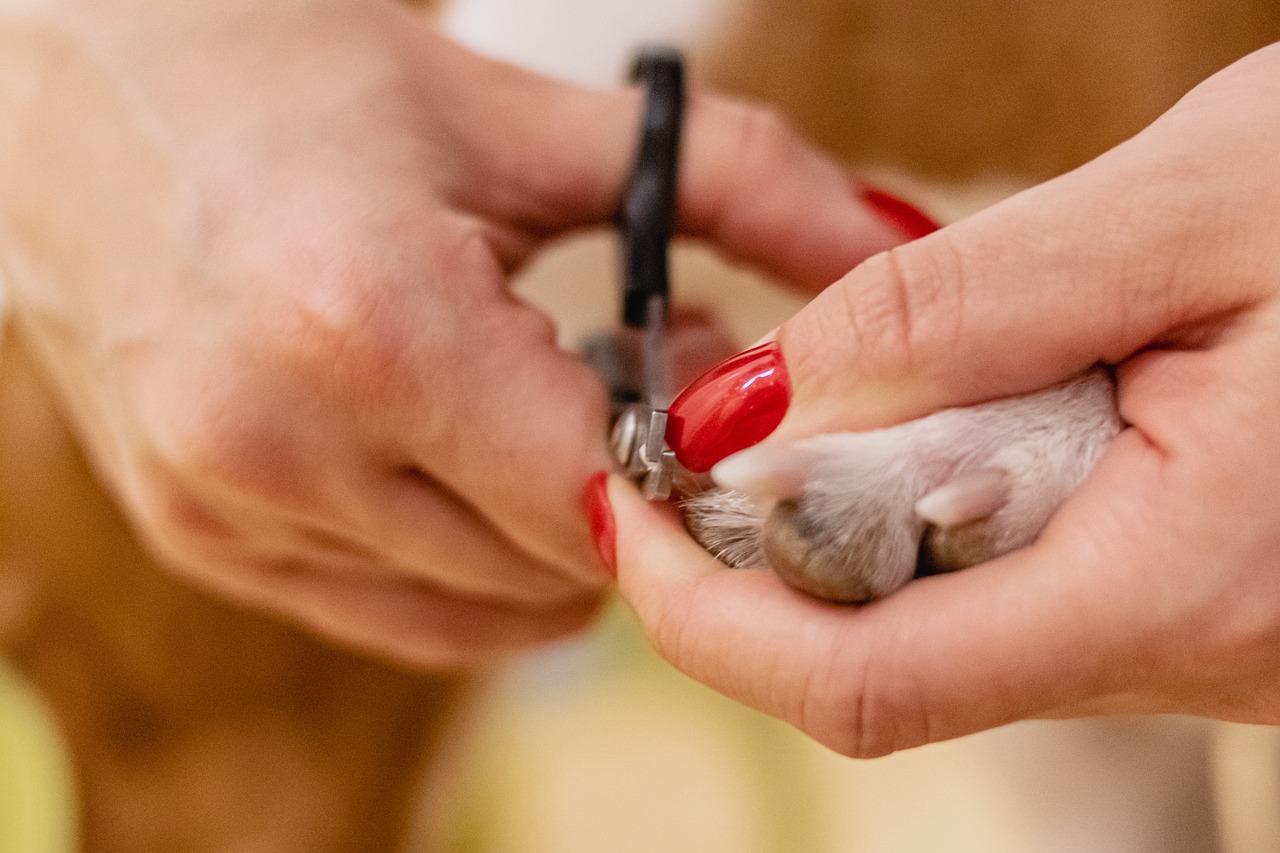
Signs Your Dog Needs Professional Grooming
As a dog owner, you might pride yourself on your grooming skills, but there are times when your furry friend needs a little extra help from a professional. Recognizing the signs that indicate your dog requires professional grooming can make a world of difference in their comfort and health. Have you ever noticed your dog scratching more than usual or developing an unpleasant odor? These could be red flags that your pup is struggling with their skin condition, and a professional groomer might be just what they need.
One of the most significant signs that your dog may need professional grooming is if their coat appears matted or tangled. Matted fur can trap moisture and irritants against the skin, leading to infections or worsening skin conditions. If brushing at home isn’t cutting it, it’s time to call in the experts. Additionally, if you notice excessive shedding or hair loss, this could indicate underlying skin issues that require specialized attention.
Another telltale sign is if your dog is constantly itching or biting at their skin. This behavior can lead to open sores and infections, making it essential to get them professional help. A groomer can provide a thorough examination of your dog’s skin and coat, ensuring that any problems are addressed promptly. Furthermore, if you detect any unusual odors coming from your dog, it could signal a skin infection or other health issue that warrants immediate professional care.
Sometimes, a dog’s skin condition may not be visible but can still affect their overall well-being. If your dog seems lethargic or is displaying changes in behavior, it might be time for a professional grooming session. A thorough grooming can help refresh their coat and skin, making them feel more comfortable and energetic. Remember, your dog relies on you to recognize when they need a little extra care.
In addition to these signs, consider the following situations where professional grooming becomes essential:
- Allergies: If your dog has known allergies, professional grooming can help manage their symptoms by using specialized products that soothe the skin.
- Skin Infections: If your dog has been diagnosed with a skin infection, professional groomers can ensure the area is treated correctly and safely.
- Senior Dogs: Older dogs may have more sensitive skin or mobility issues, making professional grooming a safer option.
In summary, being attentive to your dog’s grooming needs is crucial for their health and happiness. If you notice any of the signs mentioned above, don’t hesitate to reach out to a professional groomer. They have the skills and tools necessary to provide the best care for your furry friend, ensuring they remain comfortable and healthy.
Q: How often should I take my dog for professional grooming?
A: It depends on your dog's breed, coat type, and specific skin conditions. Generally, every 4-8 weeks is a good rule of thumb, but consult your groomer for personalized advice.
Q: Can I groom my dog at home instead of going to a professional?
A: While at-home grooming is beneficial, it’s essential to recognize when professional help is needed, especially for dogs with skin conditions or complex grooming needs.
Q: What should I look for in a professional groomer?
A: Look for groomers with experience in handling dogs with specific skin conditions, positive reviews, and a clean, safe environment.
When to Consult a Veterinarian
As a loving dog owner, it’s crucial to be vigilant about your furry friend's health, especially when they suffer from skin conditions. There comes a time when grooming at home just won’t cut it, and knowing when to consult a veterinarian can make a world of difference. If you notice any of the following symptoms, it’s time to pick up the phone and schedule that vet appointment:
- Persistent Itching or Scratching: If your dog is scratching or biting at their skin incessantly, it could indicate an underlying issue that needs professional attention.
- Redness or Inflammation: Observe for signs of redness, swelling, or hot spots on their skin. These are often signs of infection or severe irritation.
- Hair Loss: Sudden or patchy hair loss can suggest allergies, parasites, or other skin disorders that require a vet's expertise.
- Unusual Odor: If your dog has developed a foul smell, it may be due to an infection or skin condition that needs immediate care.
- Changes in Behavior: If your dog seems lethargic, irritable, or is exhibiting other unusual behaviors, it might be a sign that they are in discomfort due to their skin condition.
Additionally, if you’ve tried various grooming techniques and products without improvement, it’s essential to seek professional help. A veterinarian can provide a comprehensive evaluation and may recommend treatments such as medicated shampoos, topical ointments, or even dietary changes. They can also help rule out any serious conditions that could be affecting your dog's overall health.
Remember, your dog's skin health is a reflection of their overall well-being. Regular check-ups with a veterinarian can ensure that any skin issues are addressed promptly and effectively. Don’t hesitate to reach out for professional guidance, as it can lead to a happier, healthier life for your beloved pet.
Q: How often should I take my dog to the vet for skin issues?
A: It depends on the severity of the condition. For mild issues, a visit every 6-12 months may suffice, while more severe cases might require more frequent visits.
Q: Can I use human shampoos on my dog?
A: No, human shampoos can irritate a dog's skin. Always opt for products specifically designed for dogs.
Q: What are some common skin conditions in dogs?
A: Common conditions include allergies, dermatitis, hot spots, and fungal infections. Each requires different care approaches.
Q: How can I tell if my dog's skin condition is serious?
A: If you notice signs like severe itching, bleeding, or swelling, it’s best to consult your veterinarian immediately.
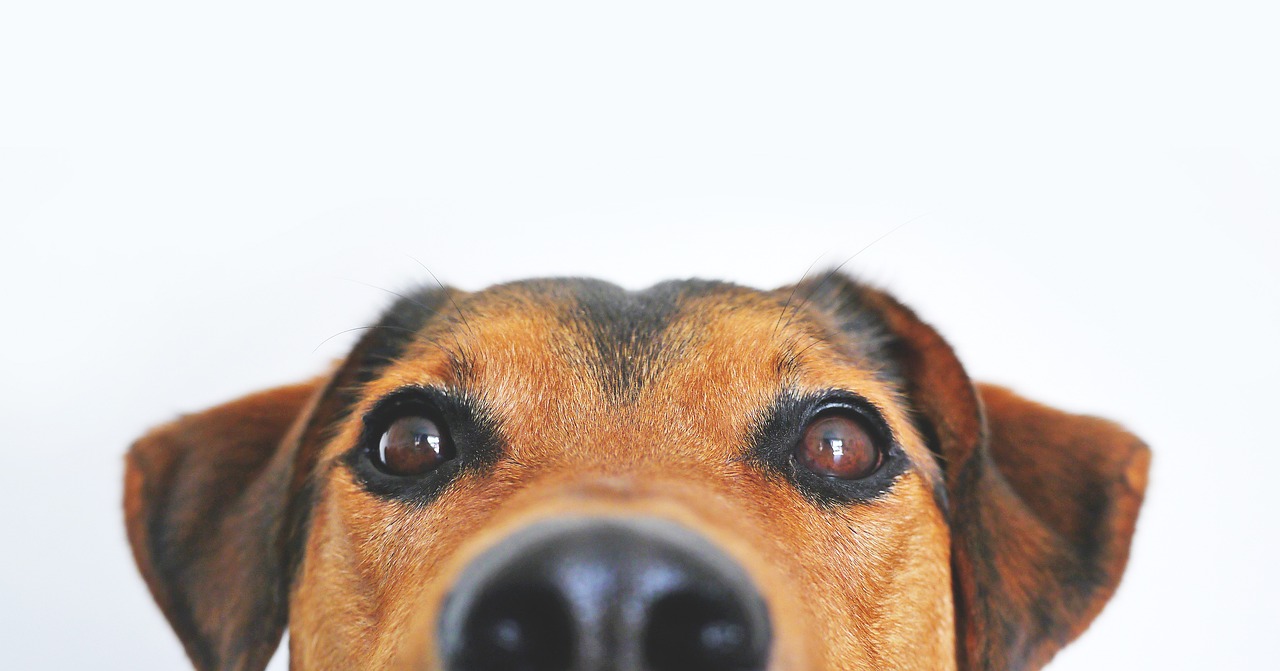
Establishing a Grooming Routine
Creating a consistent grooming routine for your dog, especially if they have a skin condition, is not just a luxury—it's a necessity. Think of grooming as a ritual that not only enhances your dog's appearance but also plays a vital role in their overall health and happiness. By establishing a routine, you’re not just keeping your furry friend looking fabulous; you're also actively participating in their skin health management. So, how do you go about setting up a grooming schedule that works for both you and your pup?
First and foremost, it's crucial to understand your dog's specific needs based on their skin condition. For instance, dogs suffering from allergies may require more frequent brushing to remove allergens and dead hair, while those with dry skin might benefit from less frequent but more moisturizing baths. A good starting point is to consult with your veterinarian or a professional groomer who can provide insights tailored to your dog's unique situation.
Once you have a clear understanding of your dog's grooming needs, it’s time to create a schedule. Consider the following elements when establishing your routine:
- Frequency: Determine how often your dog needs to be groomed. For example, dogs with skin conditions may need brushing every few days, while baths might be suitable every week or two, depending on their skin sensitivity.
- Time: Set aside a specific time for grooming sessions. This helps your dog get used to the routine and can make the process smoother. Consistency is key!
- Environment: Choose a calm and comfortable space for grooming. A familiar setting can help reduce anxiety for your dog, making grooming sessions more enjoyable for both of you.
Moreover, during each grooming session, keep an eye out for any changes in your dog's skin condition. Are there new irritations, or is their skin looking better? Regular monitoring not only helps in managing their skin health but also empowers you to make informed decisions about their grooming needs. If you notice any concerning changes, don’t hesitate to reach out to your veterinarian for advice.
To sum it up, establishing a grooming routine is about creating a balance that works for your dog while keeping their skin condition in check. It’s not just a task on your to-do list; it’s a bonding experience that can strengthen your relationship with your furry friend. Plus, who doesn’t love the feeling of a freshly groomed pup snuggling up next to them?
1. How often should I groom my dog with a skin condition?
The frequency of grooming depends on the specific skin condition. Generally, brushing every few days and bathing every week or two is recommended, but consult your vet for tailored advice.
2. What products should I use for grooming?
Opt for hypoallergenic shampoos and conditioners designed for sensitive skin. Always check with your veterinarian for recommendations that suit your dog's needs.
3. Can I groom my dog at home?
Yes, you can groom your dog at home! However, if you notice persistent skin issues or if your dog seems uncomfortable, consider seeking professional grooming services.
4. What signs indicate I should consult a veterinarian?
If your dog shows signs of severe itching, redness, swelling, or if their skin condition worsens despite your grooming efforts, it’s time to consult a vet.
Monitoring Skin Condition Progress
Monitoring your dog's skin condition progress is not just a good practice; it’s essential for ensuring their comfort and overall health. Just like we keep track of our health, our furry friends deserve the same level of attention. Regular grooming sessions provide an excellent opportunity to observe any changes in your dog's skin. During these sessions, take a moment to inspect areas that may be prone to irritation or infection, such as the belly, paws, and behind the ears. By being vigilant, you can catch any potential issues early on, which can make a world of difference in treatment outcomes.
When you're grooming, consider keeping a grooming journal to note down observations. This can include:
- Changes in skin texture or color
- New or worsening lesions
- Areas of excessive itching or scratching
- Response to grooming techniques
By documenting these details, you can provide valuable information to your veterinarian, helping them tailor a treatment plan that suits your dog's specific needs. It’s like being a detective, piecing together clues to solve the mystery of your pup’s skin health!
Additionally, consider creating a simple table to track your dog's skin condition over time. This can help you visualize trends and changes. Here’s a basic example:
| Date | Condition Observed | Grooming Method Used | Notes |
|---|---|---|---|
| 01/01/2023 | Red patches on belly | Gentle brushing | Increased scratching noted |
| 01/15/2023 | Dry skin flaking | Oatmeal bath | Condition improved after bathing |
As you monitor your dog's skin condition, look for signs of improvement or deterioration. If you notice that certain grooming techniques or products are helping, stick with those. Conversely, if a specific method seems to exacerbate issues, it may be time to rethink your approach. This proactive attitude not only enhances your dog's quality of life but also strengthens the bond between you both.
In summary, being attentive and consistent in monitoring your dog's skin condition can lead to better management of their health. Just like a gardener nurtures plants by observing their growth and needs, you, too, can help your furry friend thrive by keeping a close eye on their skin health.
Q: How often should I groom my dog with skin conditions?
A: It varies depending on the severity of the condition, but generally, grooming should be done at least once a week. Regular grooming helps keep the skin clean and free from irritants.
Q: What should I do if I notice new lesions or sores?
A: If you observe new lesions or sores, it’s essential to consult your veterinarian. They can provide a proper diagnosis and treatment plan.
Q: Can grooming products irritate my dog's skin?
A: Yes, some grooming products can irritate sensitive skin. Always opt for hypoallergenic and vet-recommended products to minimize the risk of irritation.
Q: Is it necessary to bathe my dog frequently if they have a skin condition?
A: Not necessarily. Overbathing can strip the skin of natural oils. Consult your veterinarian for a bathing schedule that suits your dog's specific needs.
Frequently Asked Questions
- What are the most common skin conditions in dogs?
Some of the most common skin conditions in dogs include allergies, hot spots, dermatitis, and fungal infections. Each of these conditions can cause discomfort and irritation, making proper grooming essential for managing symptoms and promoting healing.
- How does grooming benefit dogs with skin conditions?
Grooming helps to remove dirt, debris, and dead hair that can irritate the skin. It also promotes better air circulation to the skin, which can aid in healing. Regular grooming can help identify any changes in the skin condition early, allowing for timely intervention.
- What grooming techniques are best for dogs with sensitive skin?
For dogs with sensitive skin, gentle brushing with a soft-bristle brush is recommended. Additionally, using hypoallergenic shampoos during baths can help minimize irritation. Always consult your vet for specific grooming techniques tailored to your dog's needs.
- How often should I bathe my dog with a skin condition?
The frequency of bathing depends on the specific skin condition and your dog's overall health. Generally, bathing once every 2 to 4 weeks is advisable, but always follow your veterinarian's recommendations to avoid over-drying the skin.
- When should I seek professional grooming services?
If your dog is showing signs of severe discomfort, has matted fur, or if their skin condition worsens despite regular grooming, it’s time to consult a professional groomer. They have the expertise to handle sensitive skin and can provide specialized care.
- What signs indicate that my dog needs to see a veterinarian?
Look for signs such as excessive scratching, redness, swelling, or discharge from the skin. If your dog seems to be in pain or if the skin condition doesn’t improve with grooming, it’s crucial to consult a veterinarian for a proper diagnosis and treatment.
- How can I establish a grooming routine for my dog?
Start by setting a specific schedule for brushing and bathing based on your dog's needs. Keep track of any changes in their skin condition and adjust the routine as necessary. Consistency is key to maintaining their skin health.
- What products should I use for grooming my dog with skin issues?
Choose products that are specifically designed for dogs with skin conditions, such as hypoallergenic shampoos and conditioners. Look for ingredients that are soothing and nourishing to the skin, and avoid harsh chemicals that could exacerbate the problem.

